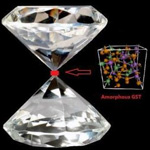 Satellite Surgery: How can NASA fix valuable satellites that are breaking down or running out of fuel? Robots to the rescue. Scientists say that the same technology that allows doctors to steer a machine through delicate abdominal surgery could someday help an operation on Earth fix a faulty fuel line on the far side of the moon. Two graduate students recently demonstrated this technology using a modified da Vinci medical console at the Homewood campus to manipulate an industrial robot at NASA’s Goddard Space Flight Center in Greenbelt, Md., about 30 miles away.
Satellite Surgery: How can NASA fix valuable satellites that are breaking down or running out of fuel? Robots to the rescue. Scientists say that the same technology that allows doctors to steer a machine through delicate abdominal surgery could someday help an operation on Earth fix a faulty fuel line on the far side of the moon. Two graduate students recently demonstrated this technology using a modified da Vinci medical console at the Homewood campus to manipulate an industrial robot at NASA’s Goddard Space Flight Center in Greenbelt, Md., about 30 miles away.
 Memory Boost: Johns Hopkins engineers have discovered previously unknown properties of a common memory material, paving the way for the development of new forms of memory drives, movie discs, and computer systems. The material, nicknamed GST, is an inexpensive phase-change memory alloy composed of germanium, antimony, and tellurium, already in use in rewritable optical media. By using diamond-tipped tools to apply pressure to the materials, a Hopkins team uncovered new electrical resistance characteristics that could make GST more useful to the computer and electronics industries. “It works 100 times faster and is rewritable millions of times,” says doctoral student Ming Xu, who was lead author on the study, published in the Proceedings of the National Academy of Sciences.
Memory Boost: Johns Hopkins engineers have discovered previously unknown properties of a common memory material, paving the way for the development of new forms of memory drives, movie discs, and computer systems. The material, nicknamed GST, is an inexpensive phase-change memory alloy composed of germanium, antimony, and tellurium, already in use in rewritable optical media. By using diamond-tipped tools to apply pressure to the materials, a Hopkins team uncovered new electrical resistance characteristics that could make GST more useful to the computer and electronics industries. “It works 100 times faster and is rewritable millions of times,” says doctoral student Ming Xu, who was lead author on the study, published in the Proceedings of the National Academy of Sciences.




